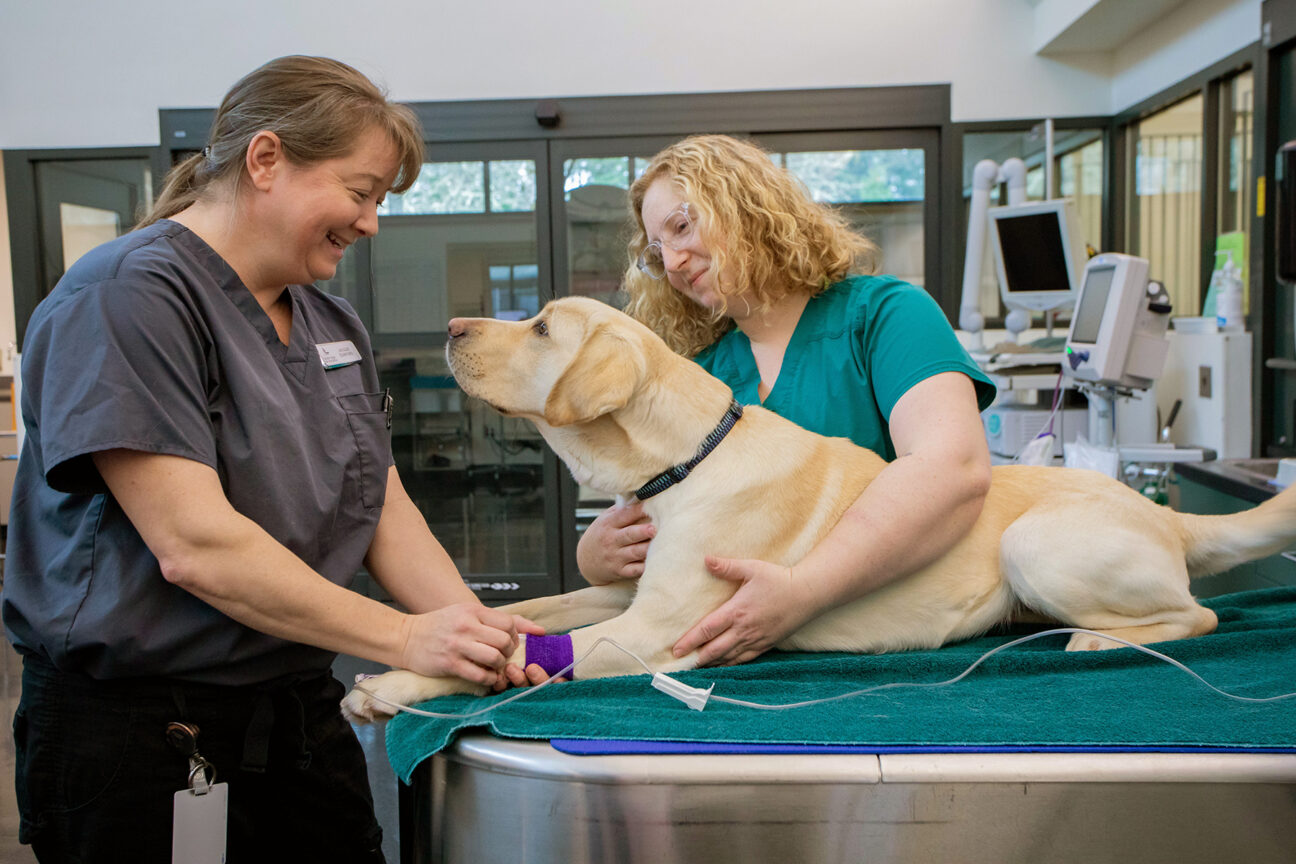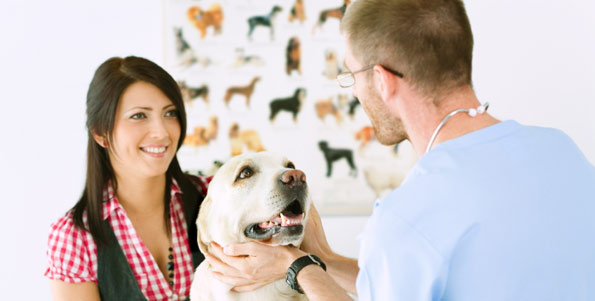Top Mistakes to Avoid Before, During, and After tplo surgery
Top Mistakes to Avoid Before, During, and After tplo surgery
Blog Article
Why Animal Rehab Is Crucial: the Perks of Veterinarian Solutions for Your Animal's Recovery
Pet recovery is a crucial element of recovery for pet dogs dealing with injuries or disabilities. Veterinary services supply critical assistance with tailored recovery strategies that attend to private requirements. These plans commonly include pain management, physical therapy, and dietary advice. Recognizing the different elements of pet rehabilitation can illuminate its importance in improving recuperation outcomes. What specific benefits do these solutions offer, and exactly how can they change a pet's recovery journey?
Recognizing Pet Recovery
Animal recovery incorporates an array of therapeutic practices intended at restoring the wellness and performance of damaged or impaired pets. This area integrates various methods, including physical treatment, hydrotherapy, and job-related therapy, customized to meet the specific requirements of each animal. Recovery professionals analyze a pet's problem, creating customized treatment plans that might involve workouts to enhance muscle mass, improve wheelchair, and enhance overall health. The process not just focuses on physical healing however also addresses psychological and behavior aspects. Pets commonly experience stress and stress and anxiety adhering to an injury, making psychological health considerations important in rehabilitation. By developing an encouraging environment, therapists can aid animals reclaim their confidence and adapt to their brand-new conditions. With normal sessions, pets can experience significant improvements, inevitably causing a much better lifestyle. In general, understanding pet recovery highlights its significance in promoting healing and enhancing the bond between pet dogs and their owners.
The Duty of Pain Management in Recovery
Just how vital works discomfort management in the recovery of injured pets? It plays a vital duty in assisting in healing and improving the total health of animals. Proper pain administration not only eases pain however also advertises flexibility, making it possible for animals to join recovery activities required for recovery. When pain is efficiently managed, pets often tend to react positively to therapy, leading to quicker rehab outcomes.Veterinarians use various approaches to evaluate and deal with discomfort, including medications, acupuncture, and different therapies. By customizing discomfort monitoring methods to the private demands of each pet, veterinarians can assure that animals remain calm and cooperative throughout their recuperation journey. Furthermore, decreasing pain helps in reducing stress and anxiety, which can prevent healing and prolong healing times. To sum up, reliable pain administration is essential for boosting the healing procedure and enhancing the lifestyle for hurt pets.
Physical Treatment Strategies for Family Pets
Many physical therapy techniques are offered to assist in the rehab of pets recuperating from injuries or surgeries (tplo surgery). These techniques can enhance wheelchair, ease discomfort, and promote recovery. Restorative workouts, for instance, assistance strengthen muscle mass and enhance joint feature, allowing animals to reclaim their physical capacities gradually. Manual therapy, which consists of massage and mobilization, can relieve stress and improve circulation, adding to a faster recovery.Other methods such as easy variety of motion exercises urge joint flexibility and lower tightness. Furthermore, electrical excitement therapy may be used to promote nerves and muscles, promoting recovery and pain relief.Veterinary professionals often customize these strategies to every animal's specific requirements, making sure a detailed rehab strategy. By implementing these physical therapy techniques, animals can experience better lifestyle and a more successful recovery from their ailments. The integration of these methods right into rehab programs is vital for excellent healing results
Advantages of Hydrotherapy for Rehab
Hydrotherapy uses considerable benefits in animal recovery, specifically in improving movement. This water-based therapy promotes discomfort alleviation while offering comfort to injured or recuperating pets. Additionally, it promotes strength-building exercises that contribute to general physical recovery.
Enhanced Movement Renovation
As animals recuperate from injuries or surgical treatments, boosted mobility frequently comes to be a key objective of their rehabilitation. Hydrotherapy serves as a valuable tool in attaining this objective. Via water-based workouts, animals can involve in low-impact motions that facilitate joint wheelchair and enhance muscular tissues without the stress and anxiety of weight-bearing activities. The buoyancy of water sustains their bodies, enabling for increased variety of activity and mobility renovation. Furthermore, hydrotherapy motivates much better equilibrium and coordination, which are vital for restoring regular activity patterns. Regular sessions can lead to substantial development in an animal's physical capacities, inevitably enhancing their top quality of life. This technique not just aids in recovery yet likewise advertises an extra energetic and satisfying way of life post-rehabilitation.
Pain Relief and Comfort

Relief from pain is a vital element of pet recovery, and hydrotherapy considerably adds to this procedure. By using water's buoyancy, hydrotherapy minimizes joint tension and reduces pain throughout movement. This restorative technique offers a relaxing atmosphere where family pets can take part in gentle workouts without the full weight of their bodies affecting their recovery. The warm water stimulates blood flow, promoting healing while additionally motivating leisure. Furthermore, hydrotherapy sessions can be customized to fulfill the details needs of the pet, making sure excellent convenience. As pets experience decreased discomfort and boosted convenience degrees, their general readiness to join rehab activities usually improves, leading to a more reliable healing journey. As a result, hydrotherapy offers as an important device in improving pain alleviation and comfort throughout rehabilitation.
Toughness Structure Exercises
Strength-building exercises play an important function in the recovery procedure, with hydrotherapy offering unique advantages. This kind of therapy makes use of water resistance to improve muscular tissue stamina without placing extreme stress on the joints. The buoyancy of water supports the family pet's weight, allowing for much safer movement and enhanced series of motion. In addition, hydrotherapy can enhance cardio wellness and advertise general health and fitness, assisting in faster recovery from injuries or surgeries. The check these guys out controlled setting also minimizes the danger of reinjury, making it an optimal choice for pets requiring rehab. Regular hydrotherapy sessions can cause recognizable renovations in mobility, strength, and endurance, inevitably boosting the animal's high quality of life and ability to go back to normal activities.
Significance of Personalized Rehab Plans
Personalized rehab strategies are crucial for resolving the distinct requirements of each pet, making sure individualized therapy techniques. These plans enable for effective progress monitoring and essential changes, cultivating optimal healing outcomes. Furthermore, a holistic technique can enhance the total wellness of the animal, advertising an extra thorough recovery experience.
Individualized Therapy Approaches
While numerous rehabilitation programs adopt a one-size-fits-all technique, the unique requirements of each pet require customized therapy prepare for perfect healing. Personalized rehab plans take into consideration different factors, consisting of the animal's species, age, medical history, and certain injuries or problems. By customizing interventions, veterinarians can resolve each animal's distinct difficulties, taking full advantage of the performance of the recovery process. Embellished plans may incorporate various methods such as physical treatment, hydrotherapy, and restorative workouts, ensuring that the therapy straightens with the animal's capabilities and progression. Additionally, personalized methods promote a more powerful bond in between the pet and the read this article caregiver, advertising a much more appealing and helpful recuperation environment. Ultimately, personalized therapy is vital for accomplishing ideal possible end results in animal recovery.
Development Tracking and Adjustments

Holistic Recovery Approaches
Alternative healing strategies are essential for efficient pet rehab, as they stress the significance of individualized therapy plans tailored per animal's particular needs. This technique considers the physical, psychological, and ecological elements impacting healing. Customized rehab plans may consist of a mix of physical therapy, dietary counseling, and behavior adjustments. By resolving these varied aspects, veterinarians can enhance the overall health of the pet and advertise a faster recovery. Such customized approaches assist in a much deeper understanding of the animal's distinct challenges, leading to more reliable interventions. Eventually, all natural healing techniques not just improve physical health but Go Here additionally add to the animal's psychological and psychological stability, guaranteeing an extensive rehabilitation experience.
The Influence of Nutrition on Healing
Nourishment plays an important function in the recovery procedure for rehabilitating pets, often determining the rate and efficiency of healing. A well-balanced diet gives the necessary nutrients that sustain cells repair, increase the immune system, and boost general vitality. Healthy protein is particularly vital, as it helps in muscle rebuilding and healing from injuries. Vital fatty acids, vitamins, and minerals likewise add to minimizing inflammation and promoting optimal cellular function.Veterinarians often emphasize the value of customized nutrition strategies, taking into consideration each pet's specific needs, age, and wellness status. Appropriate hydration is just as crucial, as fluids help with nutrition absorption and help in cleansing. By guaranteeing that animals get appropriate nutrition, caretakers can significantly boost their opportunities of an effective recuperation, leading to better long-lasting health results. Eventually, nourishment offers as a fundamental aspect in the rehab journey, sustaining animals in restoring stamina and durability post-injury or disease.
Success Stories: Family Pets Who Prospered After Recovery
Successful rehab stories abound, showcasing the resilience of pets who have conquered considerable challenges. Take, for example, Bella, a golden retriever that experienced serious injuries from an auto mishap. With committed veterinary treatment and a thorough recovery program, she restored her movement and returned to her lively self, much to her owner's joy. Max, an elderly pet cat detected with arthritis, experienced exceptional enhancement through a mix of physical treatment and discomfort monitoring. His newly found dexterity enabled him to appreciate his preferred sunbathing areas once more. Another motivating instance is that of Coco, a saved greyhound who conquered anxiety through therapy and socializing strategies, allowing her to flourish in her brand-new home. These success tales exemplify the transformative power of animal rehabilitation, highlighting that with the best assistance, family pets can not just recuperate however lead satisfying lives, enriching the bonds they show to their family members.
Frequently Asked Inquiries
The length of time Does the Rehab Process Commonly Consider Pet Dogs?
The rehab procedure for pet dogs commonly differs based on the injury or problem, varying from a couple of weeks to several months. Specific progress, therapy kind, and commitment to exercises significantly affect the total period of healing.
Exist Any Threats Connected With Animal Rehab?
Animal rehab might carry dangers such as worsening of injuries, improper methods causing pain, or inadequate surveillance during recuperation. These factors can hinder progression and impact the general effectiveness of the recovery process.

Can All Pets Take Advantage Of Recovery Solutions?
Not all animals might call for recovery, yet numerous can benefit greatly. Recovery solutions can boost mobility, ease pain, and enhance general wellness, especially for those recouping from injuries, surgical procedures, or chronic problems.
Exactly How Can I Prepare My Pet Dog for Rehab Procedure?

What Indications Suggest My Family Pet Requirements Rehab?
Indicators suggesting an animal might require rehabilitation consist of problem walking, hopping, reduced task degrees, unwillingness to jump, or indicators of pain. Observing these behaviors can motivate owners to look for expert assessment and therapy for their family pets.
Report this page